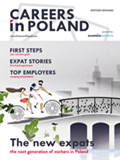All aboard or abandon ship? Why onboarding matters more than ever

Editor

Photo: Freepik
related articles
related offers
Imagine it’s your first day at a new job.
You walk in, all excited and ready to contribute, but… no one is there to greet you. Your desk isn’t ready. Your email doesn’t work. By lunchtime, you’re awkwardly eating alone, avoiding eye contact and contemplating your life choices.
Sound familiar?
This is the unfortunate reality of bad onboarding – and it’s the fastest way to turn even the most enthusiastic new hires into flight risks.
But what is ‘onboarding’, really?
Put simply, onboarding is the structured process of integrating new employees into an organization. The term originates from “bringing someone on board,” much like welcoming a new crew member onto a ship.
But onboarding is more than just paperwork and IT setups.
Done right, onboarding ensures employees feel supported, engaged, and set up for success from day one. Done badly – well, in comes the “seasickness”.
Why does onboarding matter?
You’re probably familiar with the saying that “first impressions matter”.
And matter, they do. First impressions aren’t just for first dates; they’re critical in business too. According to the data from Michael Page ebook on onbarding (2025), a poorly structured onboarding process can have serious consequences:
- 58% of employees considered leaving their job after their first day,
- Only 45% of employees felt fully supported during onboarding: a major gap between employer intent and reality.
Companies spend significant time and resources hiring top talent. So why let poor onboarding undo all that effort?
What are the most common mistakes in onboarding?
The Michael Page e-book identified some major onboarding failures:
- 76% of employees reported that no welcome event (like a team lunch or coffee chat) was organized.
- 70% of employees never get a one-on-one meeting with their manager in their first week, missing out on crucial guidance.
- 40% of new hires never received a structured onboarding plan before their first day.
- 35% of new hires eat lunch alone on their first day, reinforcing feelings of isolation.
- 30% felt they lacked sufficient support throughout the onboarding process.
When onboarding feels like an afterthought, employees start to wonder if they’ve made a mistake. And when new hires feel unsupported, they disengage – and disengaged employees don’t stick around.
Abandon ship, or the cost of poor onboarding
A bad onboarding experience is more than just an awkward first day – It can prove quite expensive. Research by Paychex (2022) found that only half of new hires are satisfied with their onboarding experience, leading to early turnover and lost productivity.
Consider this alarming detail: up to 66% of employees leave within their first year (Gallup, 2022), making recruitment a never-ending cycle.
And a costly one, at that. When employees leave quickly, companies pay the price in lost productivity, recruitment costs, and team disruptions. Investing in a better onboarding experience isn’t just nice – it’s strategic.
References:












